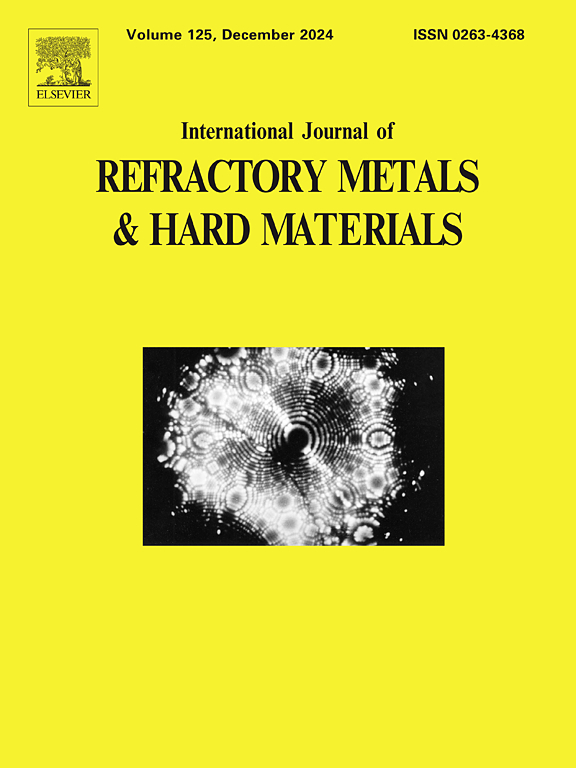Optimization of binder Jet 3D Printing Parameters for Porous Tungsten: Sintering and Pore Morphology Analysis
IF 4.6
2区 材料科学
Q2 MATERIALS SCIENCE, MULTIDISCIPLINARY
International Journal of Refractory Metals & Hard Materials
Pub Date : 2025-07-11
DOI:10.1016/j.ijrmhm.2025.107326
引用次数: 0
Abstract
Porous tungsten matrices can be fabricated using binder jet 3D printing (BJ3DP) technology, eliminating the need for additional mechanical processing. The effects of different powder and printing parameters on the preparation of porous green tungsten printed parts by BJ3DP were investigated. It was examined how powder properties influenced bulk density. It was observed that a narrower particle size distribution results in reduced surface roughness, increased loose packing density, and enhanced packing uniformity. When printing with 4-8 μm powder, the optimal layer thickness is 20 μm, and the optimal binder saturation is 80 %. The printing of green prats with moderate strength and good dimensional precision can be produced under these printing conditions. Porous tungsten materials printed with powder of the same particle size exhibited consistent pore distribution, there was essentially no occurrence of closed pores during the sintering process from 1800 °C to 2000 °C based on the pore characterization results of the sintered samples. However, at 2100 °C, oversintering led to reduced porosity and partial closure of the samples. Additionally, the hardness of the porous tungsten material increased with the sintering temperature by microhardness measurements.
多孔钨的粘结剂喷射3D打印参数优化:烧结和孔隙形态分析
多孔钨基可以使用粘合剂喷射3D打印(BJ3DP)技术制造,无需额外的机械加工。研究了不同粉末和打印参数对BJ3DP制备多孔绿钨打印件的影响。研究了粉末性能对堆积密度的影响。结果表明,较窄的粒径分布降低了表面粗糙度,增加了松散充填密度,增强了充填均匀性。当用4 ~ 8 μm粉末打印时,最佳层厚为20 μm,最佳粘结剂饱和度为80%。在这种印刷条件下,可以生产出强度适中、尺寸精度好的绿色金属制品。用相同粒径的粉末打印的多孔钨材料的孔隙分布一致,从烧结样品的孔隙表征结果来看,在1800℃至2000℃的烧结过程中,基本没有出现闭合的孔隙。然而,在2100°C时,过度填充导致孔隙率降低和样品的部分闭合。显微硬度测试表明,多孔钨材料的硬度随烧结温度的升高而升高。
本文章由计算机程序翻译,如有差异,请以英文原文为准。
求助全文
约1分钟内获得全文
求助全文
来源期刊
CiteScore
7.00
自引率
13.90%
发文量
236
审稿时长
35 days
期刊介绍:
The International Journal of Refractory Metals and Hard Materials (IJRMHM) publishes original research articles concerned with all aspects of refractory metals and hard materials. Refractory metals are defined as metals with melting points higher than 1800 °C. These are tungsten, molybdenum, chromium, tantalum, niobium, hafnium, and rhenium, as well as many compounds and alloys based thereupon. Hard materials that are included in the scope of this journal are defined as materials with hardness values higher than 1000 kg/mm2, primarily intended for applications as manufacturing tools or wear resistant components in mechanical systems. Thus they encompass carbides, nitrides and borides of metals, and related compounds. A special focus of this journal is put on the family of hardmetals, which is also known as cemented tungsten carbide, and cermets which are based on titanium carbide and carbonitrides with or without a metal binder. Ceramics and superhard materials including diamond and cubic boron nitride may also be accepted provided the subject material is presented as hard materials as defined above.

 求助内容:
求助内容: 应助结果提醒方式:
应助结果提醒方式:


